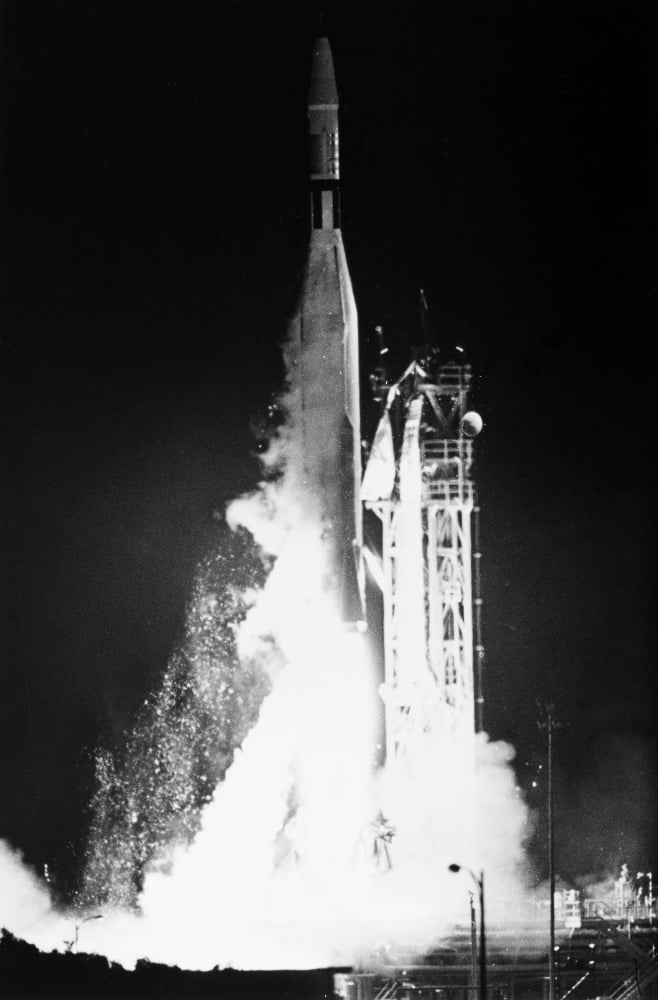

The errors were traced to a mistake in a specification of the hand-written guidance equations which were then subsequently codified in the computer program.īackground Mariner II trajectory projected on the ecliptic plane. Shortly after liftoff, errors in communication between the rocket and its ground-based guidance systems caused the rocket to veer off course, and it had to be destroyed by range safety. Mariner 1 was launched by an Atlas-Agena rocket from Cape Canaveral's Pad 12 on July 22, 1962. Mariner 1 carried a suite of experiments to determine the temperature of Venus as well to measure magnetic fields and charged particles near the planet and in interplanetary space. Mariner 1 (and its sibling spacecraft, Mariner 2), were then adapted from the lighter Ranger lunar spacecraft. Developed by Jet Propulsion Laboratory, and originally planned to be a purpose-built probe launched summer 1962, Mariner 1's design was changed when the Centaur proved unavailable at that early date. The Thrust-Augmented Long Tank Thor/Agena incorporated modifications allowing 49,000 lb (22,000 kg) more propellant and was capable of sending payloads ranging from 1400 to about 2800 pounds into 100-nautical-mile (190 km) polar circular orbits.Mariner 1, built to conduct the first American planetary flyby of Venus, was the first spacecraft of NASA's interplanetary Mariner program. The boosters were lit on the ground and jettisoned after burnout. It added three Castor solid-fuel rocket strapon boosters-each providing 53,000 lbf (236 kN) thrust-to the standard Thor core stage. The Thrust Augmented Thor (TAT) was developed to handle the growing satellites of the Corona program. Thor-Agenas were used as launch vehicles for Corona satellites from June 1959 through May 1963. These were the first photographic spy satellites, used for photographic surveillance of the Soviet Union, China and other areas. Together with the Agena upper stage, Thor was the booster of the Thor-Agena vehicle used to launch the early Corona (also known as "Keyhole" and "Discoverer") satellites from Vandenberg AFB. On 29 June 1961, the Ablestar stage used to launch Transit 4A, which became the first object to unintentionally explode in space, creating at least 294 trackable pieces of space debris. GRAB-1 was the world's first successful reconnaissance satellite, preceding the first Corona mission to return film (Discoverer 14 on August 18) by almost two months. These now-declassified satellites operated under a cover story of providing solar radiation data and included an electronics package to detect Soviet air defense radar signals.

On 22 June 1960, a Thor-Ablestar launched the first Galactic Radiation and Background (GRAB) electronic intelligence (ELINT) satellite for the United States Navy. On 13 April 1960, a Thor-Ablestar launched Transit 1B, the first experimental satellite of what eventually became the Global Navigation Satellite System. It was used as the upper stage, and provided improved performance. On 7 August 1959, a Thor-Able was used to successfully launch Explorer 6, the first satellite to transmit pictures of Earth taken from orbit.Īblestar was a liquid-propellant rocket stage burning hypergolic propellants fed from gas-pressurized propellant tanks. The mission ended prematurely at 73.6 seconds after launch on 17 August 1958 due to a turbopump failure.
Agena rocket tv#
A Thor Able I was used in an attempt to place the 84 lb (38 kg) Pioneer 0 spacecraft into lunar orbit where it would take pictures of the lunar surface with a TV camera. The Able stage from the Atlas reentry vehicle tests was upgraded to become the Able I with a third stage consisting of an unguided Altair X-248 solid-fuel rocket motor. Three mice, one on each vehicle, died in these tests. The recovery of the reentry vehicles on the succeeding two attempts were not successful. The first such launch, 116, was lost on 23 April 1958 due to a turbopump failure in the main engine. Able used the Aerojet AJ-10-40 engine from the Vanguard second stage. For these three tests a Thor core stage was topped by the Able second stage. Thor was first used as a launch vehicle during the testing program of the warhead reentry vehicle for the Atlas missile.


 0 kommentar(er)
0 kommentar(er)
